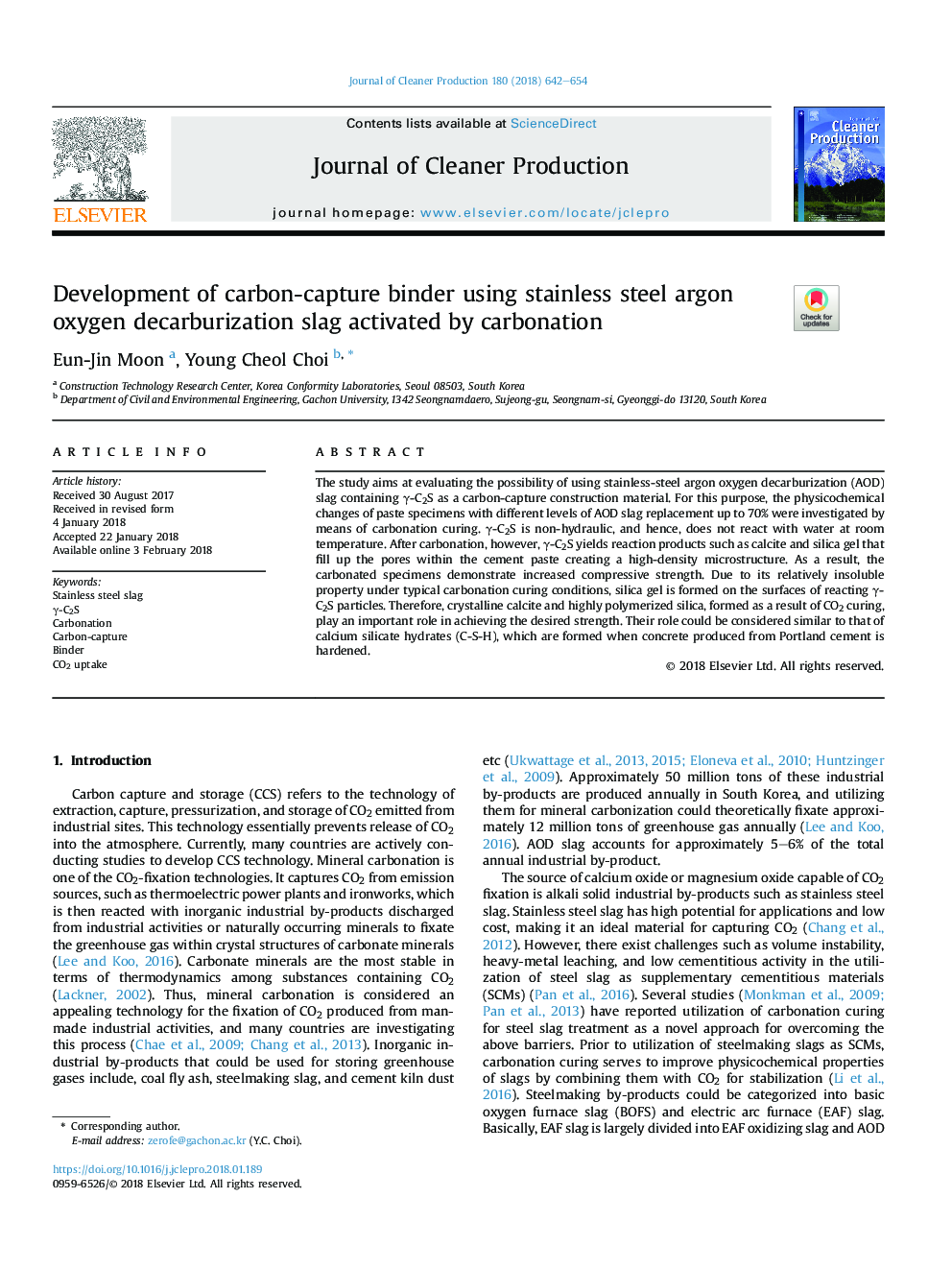| Article ID | Journal | Published Year | Pages | File Type |
|---|---|---|---|---|
| 8098040 | Journal of Cleaner Production | 2018 | 13 Pages |
Abstract
The study aims at evaluating the possibility of using stainless-steel argon oxygen decarburization (AOD) slag containing γ-C2S as a carbon-capture construction material. For this purpose, the physicochemical changes of paste specimens with different levels of AOD slag replacement up to 70% were investigated by means of carbonation curing. γ-C2S is non-hydraulic, and hence, does not react with water at room temperature. After carbonation, however, γ-C2S yields reaction products such as calcite and silica gel that fill up the pores within the cement paste creating a high-density microstructure. As a result, the carbonated specimens demonstrate increased compressive strength. Due to its relatively insoluble property under typical carbonation curing conditions, silica gel is formed on the surfaces of reacting γ-C2S particles. Therefore, crystalline calcite and highly polymerized silica, formed as a result of CO2 curing, play an important role in achieving the desired strength. Their role could be considered similar to that of calcium silicate hydrates (C-S-H), which are formed when concrete produced from Portland cement is hardened.
Related Topics
Physical Sciences and Engineering
Energy
Renewable Energy, Sustainability and the Environment
Authors
Eun-Jin Moon, Young Cheol Choi,
